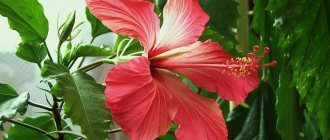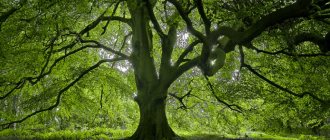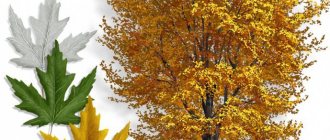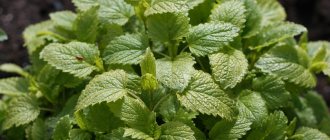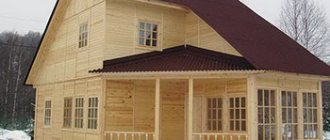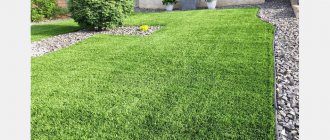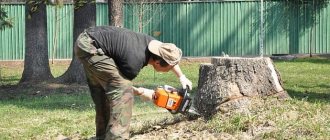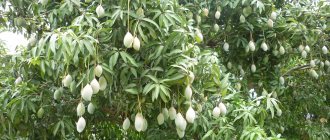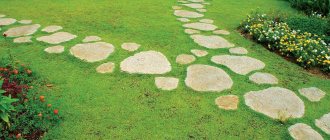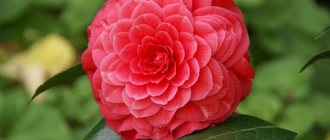The Canadian maple is a beautiful tree characterized by carved foliage that is bright green and dense in the summer and yellow and rich red in the fall. The plant is distributed in the eastern part of the United States and Canada (in the southern part of the province and the province of Quebec, as well as on the small Prince Edward Island), as its name suggests. It is from this that this country produces maple sugar and aromatic, tasty syrup, which contains a lot of microelements beneficial to the human body.
The production of this product accounts for 77% of the global figure. Even the first settlers of the country and the Indians appreciated this healthy food product and the tree itself, which gave them both food and shelter in difficult times.
Canadian maple leaf - symbol of Canada
Canadian maple is a long-lived tree, capable of living for about 300-400 years. Its leaf is displayed on the country's flag and is a symbol of Canada, which has been used since 1700, and received official recognition only in 1956. According to one legend, the choice of the maple leaf as a symbol of the nation is due to the visit of the Prince of Wales in 1860, when meeting him, immigrants from different countries had to carry national symbols with them. For the English it was roses, for the Scots it was thistle branches. Regarding citizens born in Canada: their choice fell on a Canadian maple leaf. This is explained by the greatness of the sugar tree and its beauty, especially in the autumn.
The image of the maple leaf appears on the 1 cent coin, as well as on Canadian collectible coins. Many peoples of the planet consider the Canadian maple to be a tree whose energy is favorable for humans.
Applications of sugar maple
- Canadian maple has valuable wood; its strength even exceeds that of oak wood. It has a wide variety of uses: it is used in furniture, various types of flooring and plywood, and is also used in the production of various household items and sports equipment.
- One of the most popular applications is the production of valuable maple parquet, which has a particularly beautiful shade. Light wood has a pleasant shine; it is well covered with varnish and other types of finishing materials. At the same time, it is difficult to scratch and is resistant to various mechanical damage. However, it is better not to use it where you need to drive nails or screw in screws: dense wood is difficult to work with carpentry tools.
- Another application is to obtain maple sap, which is widely used in cooking. Maple sugar is an important component of many culinary masterpieces; it is used not only in Canadian, but also in European cuisine. Breeders in many countries develop varieties that produce the greatest amount of juice.
- One of the main areas of use of Canadian (sugar) maple is landscape design. The tree is actively grown in parks and gardens, it is used in the design of plots, planted in alleys, etc. In autumn, the leaves acquire the widest range of shades, their beauty will not leave anyone indifferent. However, it also has a drawback - relatively slow growth. Old trees with a lush, spreading crown and already darkened bark look truly magnificent.
It is no coincidence that the Canadian maple has become one of the main symbols of the country - this tree looks great and at the same time is very low maintenance. Plant it on your site, and very soon the tree will become an excellent decoration for any part of the garden. Taking care of the seedlings will pay off handsomely: very soon the tree will gain enough strength and it will be able to easily withstand any natural negative factors.
More information can be found in the video.
Trees are natural air filters. Some crops are used to create parks, squares and alleys. Gardeners prefer to plant ornamental crops on the site for landscaping and design. In garden plots, not only fruit trees are used, but also forest crops, for example, Canadian maple. This tree is decorative: in summer the crown is covered with green foliage, and in autumn it turns bright orange and red.
What kind of Canadian maple is it?
The tree, the photo of which conveys its bright individual beauty, can reach a height of about 40 meters.

The crown is dense and spreading, with a diameter of 12-20 meters. The bark has light and dark shades of gray and is characterized by deep cracks. The branches are brown-red, shiny. The root system is highly branched and quite deep. The leaves are simple, opposite, located on long petioles and have five shallow, blunt-pointed or short-pointed lobes with jagged, rough edges. At the top they are dark green and smooth, at the bottom they are rough and pale.
As autumn approaches, the foliage turns yellow, orange and bright red. The flowers of the Canadian maple are small, yellowish-green, collected in cluster-shaped racemes of 8-14 pieces, located on long petioles. Flowering begins before the leaves bloom and lasts from April to May. The fruit is a lionfish, consisting of two halves - seeds with wings, the length of which is 2-2.5 cm. The lionfish is located on a long red-brown or red petiole.
Description of the species
In favorable conditions, the Canadian maple can live 300-400 years and reach a height of 40 meters. Prefers places well lit by sun or partial shade. Propagated in the natural environment by seeds.
Description of Canadian maple:
- the trunk has light brown bark, which darkens as the tree ages;
- the shape of the crown is spreading, thick, voluminous;
- the roots go deep into the ground and branch strongly;
- the leaves, consisting of several pointed lobes, have jagged edges and a long petiole. Some of them reach very large sizes. Such a leaf can be 20-22 cm wide. In autumn, the foliage acquires a beautiful crimson color with yellow or green splashes;
- blooms in spring with small yellow-green flowers collected in clusters containing from 8 to 14 flowers;
- The lionfish fruit consists of two halves with seeds that look like wings.
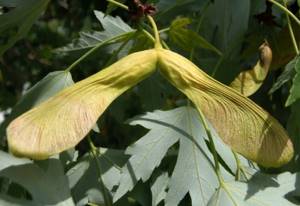
Canadian maple varieties
There are many varieties of Canadian maple, but the most common in our country are:
- Sugary Lacyanatum Vieri. Compared to other species, this plant is not tall, its maximum height is only 15 meters. The crown is spreading and very wide, shaped like a ball. The green bark of this maple is all covered with small cracks. The color of the leaves surprises with its inconstancy and variety of colors. When they bloom, the young leaves are pink, in summer they are silver-green, and in winter they are lemon-colored.
- Adirondack. The crown is wide, spreading, approximately 20 meters high. The leaves are cut into five separate pointed segments. In autumn, the leaves turn yellow and acquire a yellow or orange color with a purplish tint. Tolerates harsh winter well. But we are intolerant of strong winds that break fragile branches.
- Pyramid. Dense oval-shaped crown. Grows up to approximately 20 meters. It blooms in March with orange-red flowers. The gray bark is covered with small grooves. The dissected lobed leaves turn yellow in September.
- Freeman Autumn Blaze. A hybrid variety of Canadian and red maple. The trunk of a young tree is gray and smooth, but with age it becomes cracked and darkens. The bright green, deeply cut leaves turn orange and purple in the fall.
Natural features of Canadian maple
The tree is frost-resistant, but sensitive to gusty cold winds, hail and severe frost. Therefore, in the first years of planting, young maple seedlings need to be wrapped in order to protect them from the cold.
Most Canadian maple trees are dioecious, that is, they have exclusively male or female flowers. Sometimes bisexual Canadian maple is found.
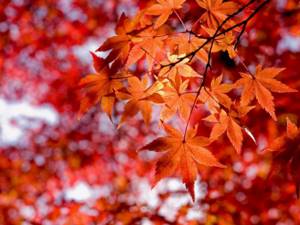
The tree, photos of which are presented in the article, has a unique foliage color (bright yellow, juicy orange, autumn purple), making the forest elegant and unique.
Conditions for growing maple
Sugar maple is one of the most unpretentious trees, so it does not require any complex care. Despite the fact that it prefers open places, it is able to grow well in partial shade and also tolerates shade quite calmly. This is a frost-resistant tree, it can tolerate temperatures down to -40 degrees.
However, in order to form a beautiful crown of a healthy tree, it is better to ensure that several important conditions for growing a sugar maple are met:
- One-year-old seedlings can freeze in the middle zone, so it is advisable to keep them indoors for the first year, gradually preparing them for replanting. In the first years after planting, it is advisable to wrap young seedlings to prevent the roots from freezing.
- Sugar maple does not like windswept hills: this variety of maple has fragile branches that are easily broken by strong winds. It is best to choose a protected place for it, isolated from strong gusts.
- Moist soil is suitable for sugar maple, but it must be well-drained. Stagnation of moisture in the soil can lead to rotting of the roots.
- Seedlings require moderate watering with regular fertilizing with mineral fertilizers. Fortified trees require additional watering only in dry years with insufficient rainfall.
To propagate sugar maples, not only seeds are used, but also cuttings; in nature, the tree also reproduces by root suckers and shoots from stumps. The percentage of rooting of cuttings is relatively small; they are used if it is not possible to obtain seed material. Another propagation option is air layering: they are treated with a root formation stimulator to obtain a new root system.
Difference between Canadian maple and Norway maple
According to its morphological characteristics, the Canadian maple resembles the Norway maple. The difference is in the juice that is released from the leaf petioles. The Norway maple has a milky liquid, while the sugar tree (another name for the Canadian maple) has clear sap. The foliage of an ordinary maple in the fall turns into the usual yellow color, while the orange maple during this period acquires rich orange shades. There are also significant differences in the plant bark. In Canadian maple it is much rougher.
Maple varieties
How nice it is to hide in the shade of this tree in the summer heat!
- The sugar maple is native to the mainland of North America.
- It is most widespread in the eastern United States.
- A red maple leaf adorns the Canadian flag.
- Well, this type of tree has taken root in Europe and Russia.
The botanical name is Aser, which translates to " sharp ". This is due to the pointed shape of the maple leaf:
- A distinctive feature of the Canadian red maple is the color of the leaves: dark green on top, on the back side it has a velvet surface and a silver tint. This type of maple reaches a height of up to 40 meters, a crown width of 20 meters.
- There is a type of maple called “Laciniatum Vieri”. It is a low tree, the height of which does not exceed 15 meters. The tree is interesting with its unusual asymmetrical crown and thin openwork leaves that have a pinkish tint.
- A separate botanical variety of maple is a special variety “Bonsai”. It is a miniature tree that is grown in a pot using special technology.
Production characteristics of maple wood
In terms of strength, Canadian maple surpassed even oak; its wood has a beautiful heart-shaped pattern, and its boards are ideal for the production of parquet, which has a natural appearance due to its special texture. Any room with Canadian oak parquet takes on a well-groomed appearance. Maple wood is widely used in furniture production, as well as in the manufacture of single-ply plywood, sports equipment, musical instruments and household items. Light wood has an iridescent sheen and can acquire a yellowish or pink tint.
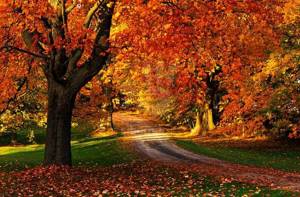
In nature, the Canadian maple is a cozy haven for birds who have chosen its crown to create nests and breed offspring; The bark, leaves and branches of this tree are a valuable source of food for wild animals (common squirrels, flying squirrels, porcupines, hares, white-tailed deer).
Varieties
In North America and the European part of Russia, several types of Canadian maple are widespread:
- Red Canadian maple. It differs from other varieties in the special reddish color of its leaves; this tree looks especially beautiful in the autumn months. The leaves are small, their length reaches 11 cm, they are divided into 5 pointed lobes. In spring, small flowers up to 5 mm in diameter appear on the branches, collected in inflorescences. The tree has an elliptical or pyramidal crown; it grows quite quickly and looks beautiful when planting trees on the sides of alleys.
- Maple Laciniatum Vieri is a short tree, its height does not exceed 15 meters. The tree has a wide asymmetrical crown, thin openwork leaves are divided into 5 lobes. When blooming, the leaves have a pleasant pinkish tint; in summer, the upper side of the leaf is green, the lower side is silver. In the autumn months, before leaf fall, the leaves take on a delicate lemon hue.
- Bonsai is a special variety of maple, which can hardly be called a separate botanical species. This is a miniature tree grown in a pot using a special technology; it is the Canadian maple that is often used for growing in the bonsai technique. The tree blooms beautifully, and the rich colors of the leaves in autumn make it one of the main decorations of the house. Maple is often called the king of bonsai - the tree will require complex care, but the result will justify all the efforts.
Canadian silver maple. It is widespread in North America, but it is also found in Russia. A distinctive feature is the color of the leaves: they are dark green on top, and the underside has a beautiful silvery tint and a velvety surface. The height of the tree reaches 30-40 meters, the width of the crown is up to 20 meters. Due to its spectacular silver crown, it is often used in the design of gardens and parks.
Types of Canadian maple
Canadian maple, planting and caring for which is not particularly difficult, is found in several varieties.
Canadian red maple. The tree is so called for the red, burgundy and purple colors of the leaves, which set the festive mood of autumn. The crown shape is pyramidal or elliptical.
The height of a tree characterized by rapid growth is on average from 25 to 40 meters, and the life cycle is 150-200 years. Canadian red maple is used for garden decoration; The tree looks impressive in park plantings, gardens, homestead areas, and is used to form green hedges.
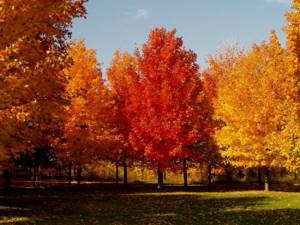
The Canadian sugar maple, which even an amateur can care for, is considered one of the most unpretentious plants, because it is undemanding to the soil composition, grows quietly in the shade, and can withstand 40-degree frosts. The leaves are quite large, about 14 cm long. Life cycle - 300-400 years, growth is slow. The plant is planted in protective forest belts, parks and alleys. For consumer purposes, sugar maple is used to produce maple sugar and maple sap - the basis for the production of syrup.
Tree care
Despite its frost resistance, we recommend wrapping the tree in the first years. Seedlings can be obtained by planting their seeds or annual seedlings. Loose soil is optimal for planting. Caring for a tree is not difficult, just water it regularly, sometimes adding mineral fertilizers.
This branchy tall tree will decorate any garden. Even without special care, it grows very quickly, becoming majestic, powerful and strong. Just imagine how beautiful the huge leaves will look in your garden when autumn comes! You can also plant it as a hedge. Oak and coniferous trees are allowed nearby. The best time to plant seedlings is spring and autumn. When you buy a seedling, make sure that it is sold in a closed container and do not destroy the earthen ball. The trees are planted at a distance of 2 meters from each other so that they have enough space. Increase the distance if possible. This giant loves light and nutritious soil. If the soil is good, you don’t even need to fertilize it.
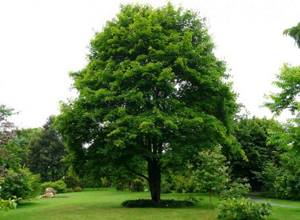
Canadian maple in spring.
Before planting, seedlings are first accustomed to the open air. To do this, they need to be taken outside for a few minutes. After planting, the young tree needs to be watered generously with 15 liters of water. Isolate the plant from strong gusts of wind. Then the tree is watered in the summer 2 times a week. In autumn and spring, watering once a month will be enough. After watering, loosen the soil shallowly and remove weeds. For the winter, don’t forget to cover the young tree with spruce branches. Sugar maple can be propagated by grafting, cuttings or seeds.
The plant responds well to pruning. Make sure he doesn't get sick. What bothers this tree the most is coral spotting. If you notice spots and branches begin to die, you need to remove them.
Bonsai - growing a smaller copy of a maple tree
You can grow a Canadian maple in a smaller copy of a natural specimen at home yourself. This technique of obtaining a living miniature copy of a plant is called “bonsai” (which means “plant on a tray”). It originated more than 1000 years ago in Japan; gained popularity in Europe in the 80s of the 20th century.
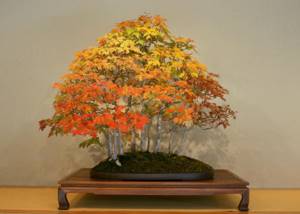
Canadian maple grown using the bonsai technique is an ideal plant for indoor decor; The bright color of autumn leaves will decorate and enliven any room. The method of growing a miniature tree is to keep it in one container, pinching the tops of the shoots and cutting the roots, which ensures a balance between the above-ground and underground parts of the plant. At the same time, using a special wire, the tree is given the required shape.
Features of maple planting
Under natural conditions, silver maple actively reproduces using seeds. As soon as a plant seed hits the soil, it begins to germinate. Already in the first day after falling into the soil, sprouts appear on the seed.
The only necessary condition for germination is sufficient soil moisture. In dry soil, seeds are unlikely to sprout.
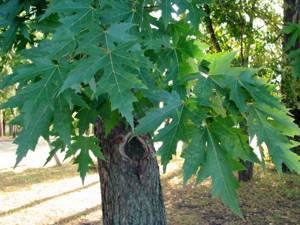
To grow silver maple, you need to choose a well-lit area with fertile, moist soil. Such conditions are also suitable for another species - small-leaved maple.
An adult plant is not afraid of rainy periods, swampy soil and even frosts. Young shoots may suffer from a strong drop in temperature.
It is recommended to plant the collected seeds almost immediately. This way, by the time the autumn cold comes, the plant will have time to take root and get stronger. In addition, this planting regime corresponds to the natural growth conditions of the plant.
Application of silver maple
White, or silver, maple is, first of all, an ornamental plant. It tolerates polluted and gassed urban environments well, and therefore is used for landscaping city parks, gardens and alleys.

It is often grown along the banks of reservoirs, as it feels very comfortable near water. The unusual appearance of the plant allows it to be used both in group and single plantings. The crown, cast in a silvery color, makes an interesting combination with coniferous plants: spruce, fir and juniper.
Silver maple also looks good against the background of buildings painted in bright, contrasting colors. Therefore, it is often used for landscaping city courtyards and squares.

The benefits of silver maple lie not only in its decorative appearance. Furniture is made from maple wood. And the juice of this plant is used in cooking to produce maple syrup, sugar and even beer. Due to the high sugar content in silver maple sap, it is also called silver maple.
For your information, we suggest you read another article about Norway maple by following the link.
Wintering of Canadian maple

Adult specimens can withstand temperatures as low as -40°C. However, seedlings and young specimens should be protected from frost and icing by wrapping the trunk with burlap, as well as by mulching and covering the tree trunk with spruce branches.
Planting maple in open ground

For the successful cultivation of Canadian maple on a personal plot, the correct implementation of planting work, including the choice of location and soil, is of great importance.
Selection of location and soil

The ornamental tree does well in sunny, wind-protected areas. Sugar maple also develops well in light shade. The crop is demanding in terms of soil composition and needs fertile soil with good drainage qualities.
How and when to plant
The best survival rate is distinguished by annual seedlings grown from seeds, which, before planting in open ground, are grown in containers with fertile and loose soil, and are also pre-hardened, adapting to the external environment.
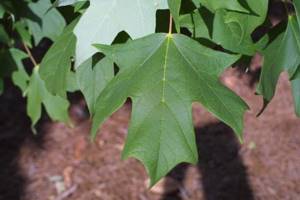
Planting, the optimal time for which is considered to be early spring, is carried out according to the following scheme:
- A hole with dimensions of 50x50 cm is dug.
- A drainage layer is placed at the bottom, which will protect the roots from stagnation of water.
- A seedling with straightened roots is lowered.
- The hole is filled with the extracted soil so that the root collar is slightly buried.
- The tree trunk circle is trampled down and watered at the rate of 1.5 buckets of water per specimen.
Botanical description of varieties
Canadian maple, also known as sugar maple, is represented by powerful trees that can reach 40 meters in height. The dense crown is formed by graceful branches covered with reddish bark. Slightly serrated leaves, which are particularly decorative, are arranged oppositely and are attached to the shoots using long petioles. With the arrival of autumn, the foliage plays with various colors of yellow and crimson. During the flowering period, which occurs in spring, racemose inflorescences consisting of greenish-yellow flowers are observed. After flowering is completed, fruits are formed, which are lionfish.

There are two typical forms:
- Red Canadian maple - representatives are distinguished by the red color of their foliage, which becomes even brighter and more saturated by autumn. The subspecies is less demanding on soil composition than the standard variety.
- Silver maple - a distinctive characteristic of the tree is the silver color of the back side of the leaf plate. And the dense, ellipsoidal crown made the native of Canada a very popular plant in park areas of Europe.
